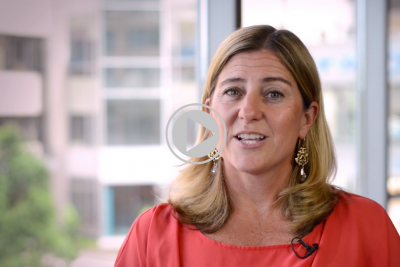I’ve just finished another block on the COVID ICU service, and now more than a year and a half into the pandemic, we are sadly experiencing yet another surge in cases. As I write this, local hospitalization rates are nearing 75% of our all-time high and still climbing. Something different I’ve noticed this time, with circulation of the more virulent Delta variant, is that patients are coming in younger and are getting sicker faster. My colleagues from the children’s hospitals are also sounding the alarm bells about rising admissions, something we didn’t experience much during prior surges.
How does COVID-19 affect the lungs?
So what is this all about? What does COVID-19 do to the lungs anyway? What is happening to those who get very sick and need life support on ventilators?
The virus that causes COVID-19, SARS coronavirus 2 (SARS-CoV2), is new to humanity, but we have learned a tremendous amount due to the tireless work of biomedical researchers across the globe. We know precisely how the virus gets into our bodies, down to the level of ACE2 protein receptors on the surface of cells lining our respiratory tract. We know the various ways the virus has tweaked the molecular structure of its Spike entry protein over time to enhance infectivity and spread. We’ve observed this enough times that we’ve started labeling these variants with greek symbols, hence my reference to the ‘Delta’ variant above.
The beginning of infection
When SARS-CoV2 infects our respiratory tract, it comes in like a wrecking ball. It infects and replicate in cells that then burst open to release viral particles, spreading like wildfire. The first line of defense is the barrier of our respiratory tract. At that point, the virus has breached the barrier and is able to spread even further. Neighboring cells emit potent inflammatory mediators to recruit specialized immune cells, signaling far and wide that danger has arrived. If neighboring cells get enough of a heads-up, they can self-induce death in an effort to protect healthy bystanders. But the virus is fast and efficient while it races the immune system’s efforts to gain control. While this is going on in the first few days of illness, one can feel weak and feverish, what we think of as flu-like symptoms.
The immune system kicks into gear, protecting your lungs from COVID-19
In the next phase, our immune systems, which prior infections and vaccinations have fine-tuned, re-tool antibodies and killer immune cells to capture and eliminate the new pathogen. But it takes time. In some people, the immune system gears up efficiently, and is able to neutralize the virus quickly. The cells of the respiratory tract replicate and spread to re-establish the all-important barrier to keep invaders out. In these cases, COVID ends up feeling like ‘a bad cold’ or if you’re really lucky, not much at all.
But sometimes, this process is either delayed or doesn’t occur properly, for reasons that are being intensively studied. What has emerged at this point is that some with underlying medical conditions, for example, chronic heart/kidney/lung disease, diabetes, or obesity appear to be more susceptible to severe illness. It also makes sense that those who take medication to suppress the immune system are more susceptible to infection and may have more difficulty clearing the virus.
In cases of more severe disease, tissue damage persists as inflammation smolders, the open barrier floods the airspaces of the lungs with fluid and sticky proteins, and excessive coagulation ramps up and starts to impede blood flow in the small vessels that line the airspaces. A person starts to cough, it becomes harder to breathe and oxygen levels in the blood start to drop because the disrupted airspaces are no longer taking up the oxygen we breathe. Curiously, some people with COVID-19 illness don’t feel short of breath with low oxygen levels-a particularly dangerous scenario. This can smolder and get bad enough for someone to be hospitalized for supplemental oxygen to try and force it into the bloodstream. More than half of patients admitted to the hospital require high flow of oxygen.
When your lungs can’t handle COVID-19
In some patients, instead of smoldering, the inflammatory process amplifies. Oxygen needs increase, often suddenly, to the point where the only way to provide enough support to keep them alive is a ventilator or even lung bypass (which we call ECMO). For many this is a scary proposition, as it should be, it is life support and there is no guarantee that a person will survive this stage. Some people, with time and intensive support in the ICU, slowly repair their lungs and get well enough to liberate themselves from the ventilator. Some may recover fully over weeks, but others are functionally limited and/or oxygen-dependent long-term, often part of a multisystem disorder we are beginning to recognize as long COVID. Still, others are not so fortunate.
For some, the repair process never happens, and the lungs start to undergo fibrosis over days and weeks on the ventilator. Essentially the lungs scar irreversibly and can no longer properly exchange the air we breathe. Sometimes the fibrosis is so severe that it is fatal. That is the harsh reality of COVID-19 that we see in the ICU every day. Approximately one in four patients admitted to the ICU will require ventilator support and half of those patients will not survive. Unfortunately, we still cannot accurately predict who will suffer this type of severe COVID-19 illness.
Vaccines are the answer
So, what can a person do to avoid this devastating disease? We’ve been shouting it from the rooftops for months, vaccinate, vaccinate, vaccinate! We are truly fortunate to have a medical research enterprise that was primed by prior severe coronavirus outbreaks and with advanced mRNA vaccine research that was well along the pipeline to be able to rapidly pursue a safe and effective vaccine. Millions have been vaccinated and we know from emerging data that it is exceedingly effective at preventing severe illness in healthy individuals. I have received it and will help my kids get it when available to them. I expect you will do the same.
Vaccines and boosters for all eligible ages are available through several BJC HealthCare locations, other members of the Pandemic Task Force, or retail pharmacies and vaccine sites across the region. Some pediatrician or primary care offices may also offer the COVID-19 vaccine to their patients, so check with your doctor as well!






Comments